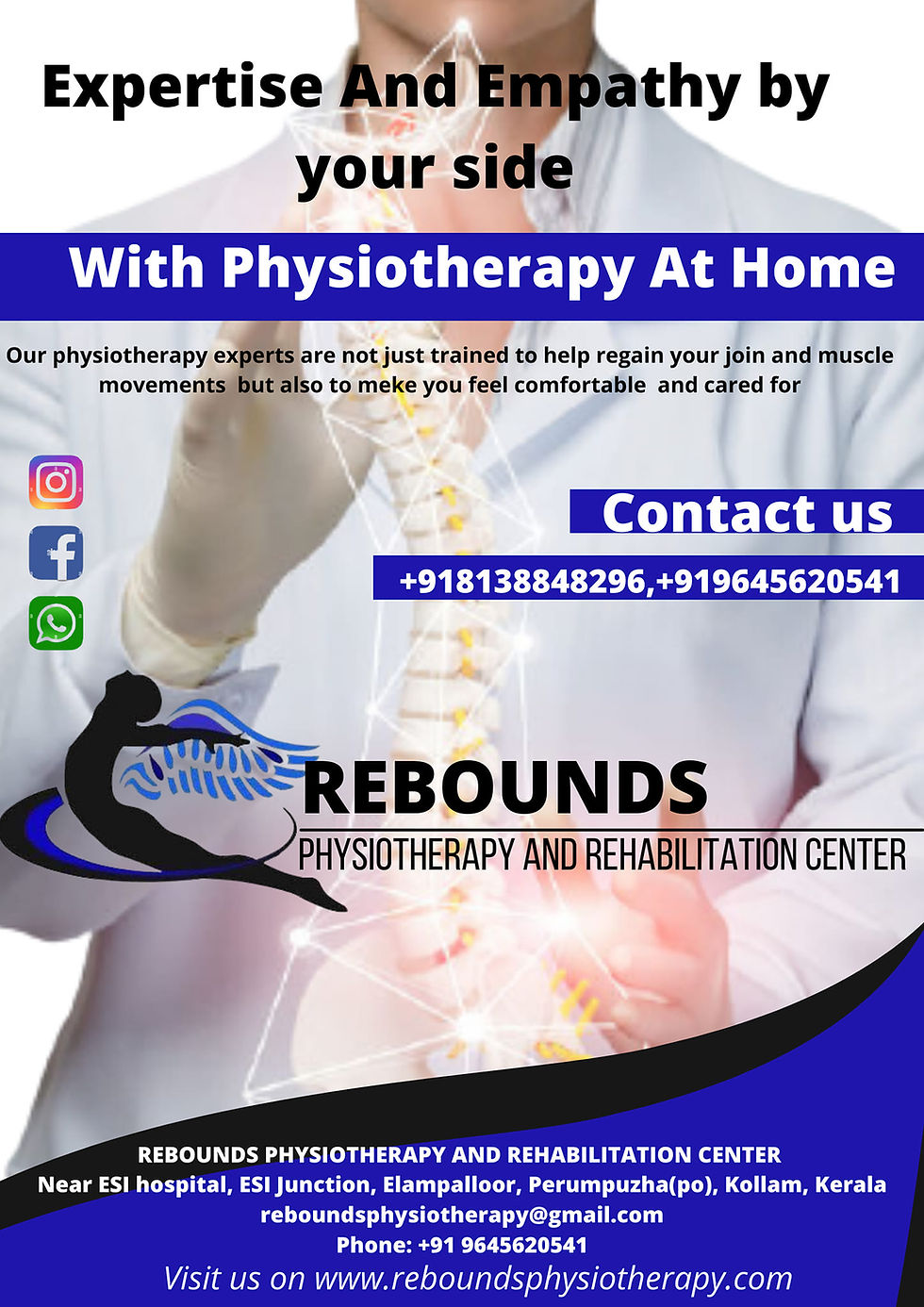how to rule out trapezitis from other neck pains ???
- rebounds physiotherapy clinic
- May 6, 2022
- 3 min read

trapezius is a pair of large triangular muscles extending over the back of the neck and shoulders and moving the head and shoulder blade.The trapezius is a muscle made up of particularly long muscle fibers that spanning a large width of the upper back. Functionally, this enables the trapezius to assist in mainly postural attributes, allowing and supporting the spinal column to remain erect when the person is standing.

The trapezius muscle is also used for active movements eg side bending and turning the head, elevating and depressing the shoulders, and internally rotating the arm. Trapezitis is an inflammation caused in the trapezius muscles which further leads to pain and spasm in the neck. It is increasingly becoming common among people working at desk, using computers and also those who do physical labor or use their neck and back muscles a lot. It is necessary to know the causes and symptoms of trapezitis in addition to the treatment guidelines to be able to manage the condition well.The pain caused due to trapezitis lasts for a short period of time, which is usually between 3 to 5 days. Some of the major reasons which lead to the pain include stress and fatigue to the muscle. This is not all; bad posture is also termed as one of the major reasons of pain. Trapezitis is majorly found in individuals who are required to keep their head stable for a long period of time. Hence people working on computers for long or driving for long distance majorly suffer from trapezitis.
Causes of Trapezitis
Traditionally trapezius was termed as large muscle of neck and upper back. The name of the muscle came due to its trapezoid shape.

Trapezius is made up of bands of muscle fibers. The three bands consist of superior muscle fiber band, middle and also the inferior band. When any individual suffers from inflammation in any of these three bands, it is termed as trapezitis.
Some of the common causes of trapezitis include:
Working for a long period in the same position.
Reading a book in an awkward position for a prolonged period.
Driving for long distances.
Watching television in the same or an awkward posture for long time.
Breast feeding women too can suffer from trapezitis, especially if she bends her shoulder while feeding her baby.
Some people may also experience trapezitis, due to weak muscles of the neck and back, which may have resulted from other health conditions or injuries. Trauma, fall or blow on the neck or back can be one of the causes of trapezitis.

Symptoms of Trapezitis Initial symptoms of trapezitis are quite mild, which shall begin with some discomfort in the neck. Some of the symptoms of trapezitis commonly experienced by people include,
Pain is felt at nape of neck, usually during evening or night after working hours or driving for long.
Muscles become stiff and tight, which can only be healed or treated after the patient takes a good sleep or an effective massage.
After the early stage of trapezitis passes away, individuals are still said to suffer from problems mentioned below;
Episodes of pain are often experienced causing pain in neck.
There may also be difficulty in movement of neck due to spasms.
After prolonged period of pain due to trapezitis, the pain becomes more troublesome and may appear often by the slightest trigger or strain in the trapezius.
Pain and tightness in the neck and trapezius muscle may last for usually 3 to 5 days in an individual.
During this phase of trapezitis, patient might also complain of pain in their arms and hands.
In some conditions of trapezitis, particularly long standing ones, the chronic muscle spasm may also lead to nerve compression.This often results in further symptoms of trapezitis like tingling, numbness or even weakness in the arms, hands and fingers on the affected side.
Goals of Physiotherapy:
Improves pain through advanced modalities
Reduces tightness
Reduces inflammation
Reduces spasm
Reduces tightness
Increases strength: resisted band exercises
Alignment correction through manual therapy
Taping technique
Laser therapy for instant pain relief
Reflexology
Dr.Gayathri Rajeevan
Senior Consultant Physiotherapist
Rebounds Physiotherapy And Rehabilitation Cenetr,
BPT, MPT(Cardiorespiratory),MIAP


#neckpain #trapezitis #neckpainphysiotherapy #physiotherapy #reboundsphysiotherapyandrehabilitationcenter #rebounds #physiotherapyinkundara #keralaphysiotherapy #keralapuram #nallila #bestphysiotherapyservive #physiotherapysevice #physiotherapybackpain #pain #painmanagement #painandphysiotherapy #physiotherapyservicenearme #cardiorespiratoryphysiotherapy #orthophysiotherapy #neurophysiotherapy #sportsinjury #sports #foootballinjury





Comments